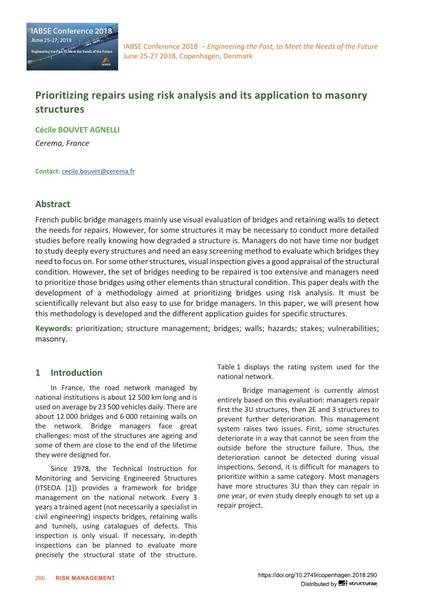| Médium: |
papier de conférence |
| Langue(s): |
anglais
|
| Conférence: |
IABSE Conference: Engineering the Past, to Meet the Needs of the Future, Copenhagen, Denmark, 25-27 June 2018 |
| Publié dans: |
IABSE Conference Copenhagen 2018 |
|
Page(s):
|
290-296
|
Nombre total de pages (du PDF): |
7 |
|
|
Page(s):
|
290-296
|
| Nombre total de pages (du PDF): |
7 |
| DOI: |
10.2749/copenhagen.2018.290 |
|
Abstrait:
|
French public bridge managers mainly use visual evaluation of bridges and retaining walls to detect the needs for repairs. However, for some structures it may be necessary to conduct more detailed studies before really knowing how degraded a structure is. Managers do not have time nor budget to study deeply every structures and need an easy screening method to evaluate which bridges they need to focus on. For some other structures, visual inspection gives a good appraisal of the structural condition. However, the set of bridges needing to be repaired is too extensive and managers need to prioritize those bridges using other elements than structural condition. This paper deals with the development of a methodology aimed at prioritizing bridges using risk analysis. It must be scientifically relevant but also easy to use for bridge managers. In this paper, we will present how this methodology is developed and the different application guides for specific structures.
|
|
Mots-clé:
|
ponts
|

